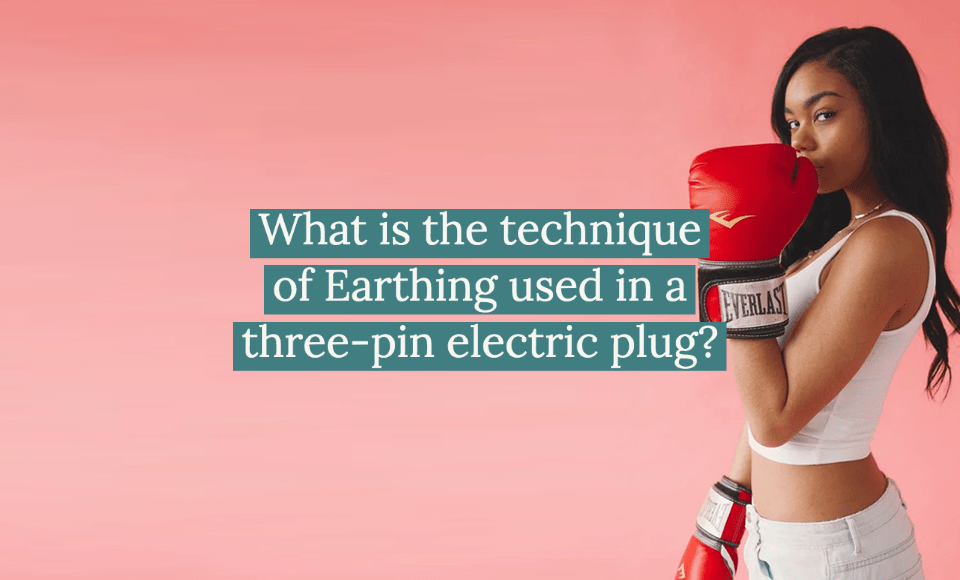When an electrical appliance with high wattages, such as a pressing iron or a microwave oven does not have any flaw or defect in their components, the electrical current on it passes through two smaller pins only. No current can pass through the longer third pin and the wire connected with it. Meanwhile, one end of the wire that connects the third pin to the appliance remains connected with the inner surface of the device or machine. On the other hand, one end of the wire from the socket is connected with an electricity-conducting metallic plate that is placed on the surface of the Earth. This type of electric connection is commonly known as earthing.
If a live wire in the appliance becomes loose and touches any component inside, an electric current starts flowing in the appliance’s metallic body. If the electric current is freely flowing, a person that touches it using his or her hand will get a powerful electric shock. A human being’s body is considered a good conductor of electricity, so it will attract electric currents quite easily. However, if a better or stronger conductor is provided for the appliance, then it will be able to regulate the current that flows through it more and may not cause short circuits. A better material for the current to pass through is copper, which is often connected with the third pin used for the earthing process.
There is a reason behind making this third pin larger. As soon as the shorter two pins enter the socket, the electric current starts flowing to the appliance, and if there is some defect found in the component, there is a probability that a person may get electric shock right there and then. However, since the third pin is longer, before the current starts going to the appliance through the lower pins, it already goes through an earthing process that minimizes the chance of someone suffering from electric shock.
Earthing Simplified
If the details above are still somewhat confusing, here is a simplified explanation of earthing. A live wire is usually where the electric current flows through, and at the bottom of that live wire is a separate “neutral” wire that is sometimes inactive. The neutral wire would often have a metal conductor connected to it that is buried or placed on the ground or at the surface of the Earth, and the appliance would also have an extra metal conductor that has the same setup.
An electrical component that has a defect would produce a fault current, which is the one that gives people electric shock if there is no earthing. When a person receives an electric shock, the fault current that flows through the body will go down to the ground as the Earth is a natural conductor. If there is an earthing method applied to the appliance and the neutral wire, then the fault current would flow through the wires on the ground rather than on the person touching the appliance.
Two Types of Earthing
There are currently two types of earthing that are utilized by manufacturers for building their appliances. The first type is neutral earthing, wherein the neutral system is connected to the ground via a GI (galvanized) wire. Appliances with a star winding (Y-shaped connection) are often the ones that use this type rather than those with Delta winding (triangle-shaped connection). For neutral earthing, the machine that provides the process is usually the transformer or generator where the appliance is connected.
The second type is the one explained at the beginning of this guide, and this type is typically called equipment earthing. As the name suggests, equipment earthing is done when the appliance or equipment itself already possess earthing properties to prevent high voltage surges. A metal conductor is often placed on the ground so that the fault current passes through it, and most of these conductors are made of copper.
Is Earthing Good for Your Health?
There may be some people who would be confused with statements that indicated earthing or grounding as a healthy way to heal muscles and reduce inflammation. Now, allowing yourself to be electrocuted by an appliance is bad, as the high voltage surges may often do more damage to the body than heal you, but research suggests that getting electrical conductivity on the ground may produce benefits for your body.
Because people are discovering that grounding is good for the health, they would sometimes buy grounding equipment such as grounding mats and even grounding socks, but you don’t really have to spend money in order to ground yourself. Most of the time, all you have to do is to walk barefoot or lie on the ground for a few minutes to get enough current to go through your body, as the Earth has natural electrical charges to flows in multiple directions.
Additional reading:
- Earthing system (Wikipedia)
